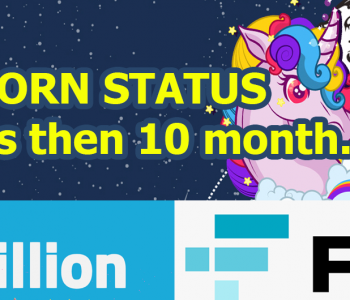 Blog
Blog
The Intersection of Digitalisation and Tokenization in Supply Chain…
The intersection of digitalisation and tokenization in supply chain management is a hot topic in the business world today. As more and more companies embrace digital technologies, the use of tokens to track and manage the flow of goods and services is becoming increasingly prevalent. In this blog post, we will explore the ways in which digitalisation and tokenization are transforming supply chain management and the benefits they offer to businesses.
Digitalisation refers to the process of converting analog information into digital form. This includes everything from converting paper documents into digital files to using sensors and other digital technologies to track and monitor the movement of goods. Digitalisation allows for greater efficiency, accuracy, and transparency in supply chain management, as it allows for real-time tracking and monitoring of goods and services.
Tokenization, on the other hand, refers to the use of tokens to represent real-world assets. These tokens can be used to track and manage the movement of goods and services in a supply chain, as well as to facilitate transactions between parties. Tokenization allows for increased efficiency, as it allows for the automation of certain processes and reduces the need for manual intervention.
Together, digitalisation and tokenization offer a powerful combination for supply chain management. By using digital technologies to track and monitor the movement of goods and services, and using tokens to facilitate transactions and automate certain processes, businesses can achieve greater efficiency, accuracy, and transparency in their supply chain operations. Additionally, the use of tokens allows for increased security and reduced risk, as tokens can be programmed to include certain conditions and restrictions that must be met before they can be used.
One of the key benefits of digitalisation and tokenization in supply chain management is the ability to track and monitor the movement of goods in real-time. With digital technologies, businesses can track the location of goods at every stage of the supply chain, from production to delivery. This allows for greater transparency and visibility into the movement of goods, which can help businesses to identify and resolve any issues that may arise.
Tokenization can also help to streamline and automate certain processes in the supply chain. For example, tokens can be used to represent ownership of goods or services, allowing for the automatic transfer of ownership when a transaction is completed. This can reduce the need for manual intervention and improve the efficiency of the supply chain.
In addition to increased efficiency and transparency, the use of tokens in supply chain management can also improve security and reduce risk. Tokens can be programmed to include certain conditions and restrictions that must be met before they can be used, helping to ensure that transactions are conducted in a secure and controlled manner. This can help to reduce the risk of fraud and other types of abuse in the supply chain.
While there are many benefits to the intersection of digitalisation and tokenization in supply chain management, it is important for businesses to carefully consider the implications of these technologies. For example, the use of digital technologies and tokens may require significant investments in infrastructure and training, and there may be regulatory considerations to take into account. Additionally, there may be privacy and data security concerns to consider when using digital technologies and tokens to track and monitor the movement of goods.
Overall, the intersection of digitalisation and tokenization in supply chain management is a powerful force for transformation in the business world. By leveraging these technologies, businesses can achieve greater efficiency, accuracy, and transparency in their supply chain operations, while also reducing risk and improving security. As these technologies continue to evolve, it is likely that we will see even more transformation in the way goods and services are tracked and managed in the supply chain.








